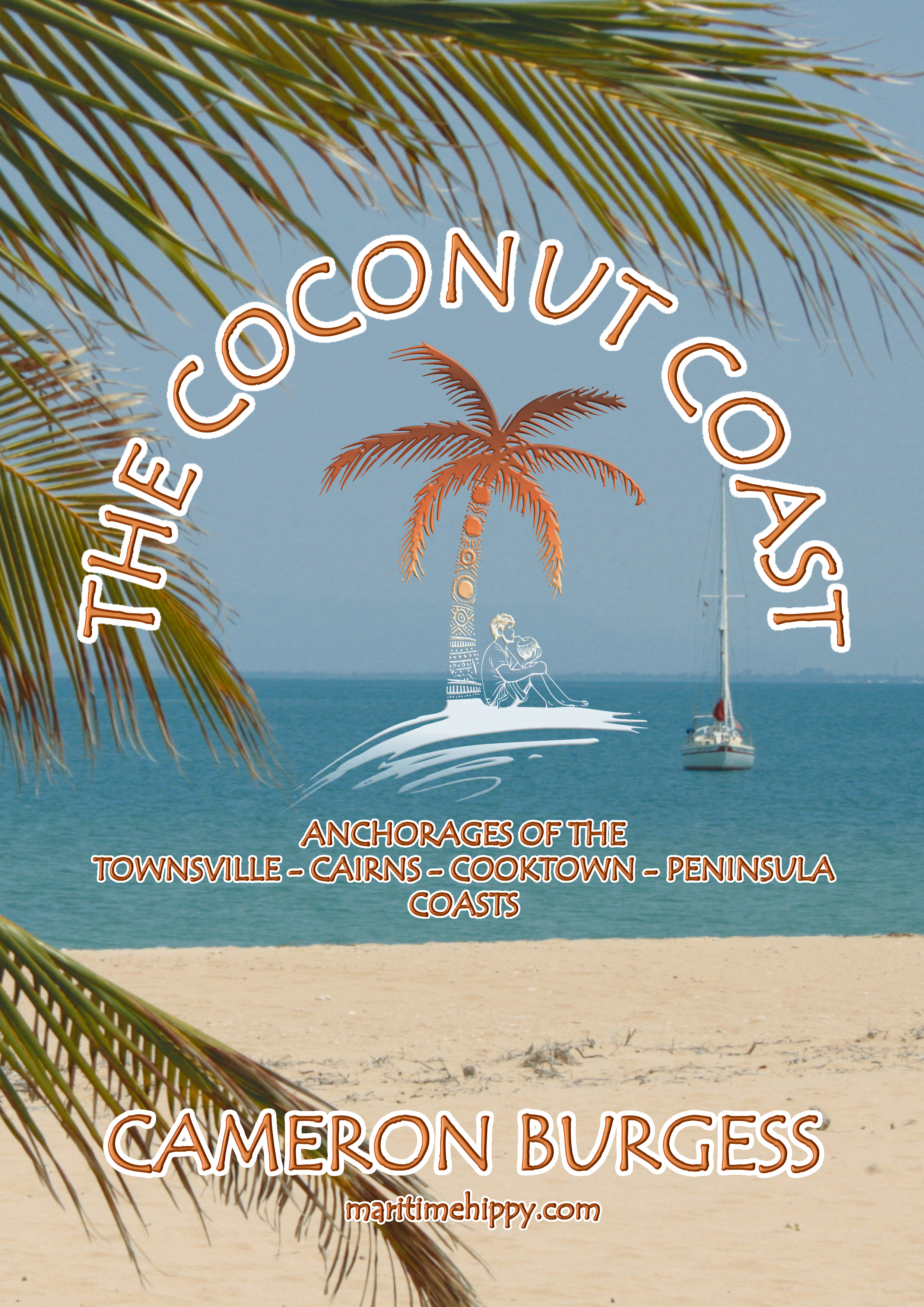I was asked the other day, “What are these yellow buoys just off the anchorage? Are they a special marker of some kind?”
No. They are shark drum lines and have been deployed in Queensland since 1962 as a direct result of a number of fatal shark incidents that year. Today, there are more than 360 drum lines and 30 shark nets along the Queensland coast.
You’ll see drum lines all up and down the coast of Queensland positioned directly off popular swimming areas or places where tourists frequent. There are often several together, positioned in a line. On the surface, the main yellow buoy trails a pick-up line with three smaller yellow floats attached. Each drum line buoy is independent of the others in its group, so you can pass between them and not get tangled in any line. Beneath the water are two lines: one is anchored to the seabed, the other line has baited hooks to snare sharks of all species.
The objective of the device is to prevent sharks from approaching popular beaches. Equipment is positioned offshore to prevent human and shark interaction. But wouldn’t the bait attract sharks in the first place, and once an animal has died on the hook, wouldn’t lifeless carcasses attract more predators to the feast? Experts have long warned using baited hooks could increase the risk of human-shark encounters. Indeed, many sharks found dead on drum lines had large bite marks or body parts missing, indicating larger sharks are eating snared individuals. Helpfully, the buoys also sport a “no swimming” icon on them which is not easily seen until almost upon them.
Since their introduction to Queensland coastal waters, more than 57,000 sharks of various species (most of them non-threatening to humans) have been caught. In 2023 alone, 614 “non-target” animals were caught, including 11 humpback whales, 2 dugongs, 12 dolphins, and 38 turtles. Of these, more than 400 – including nine dolphins and five turtles – died. About 30% of the “non-target” animals caught were released alive. Additionally, since 2014, 15 “critically endangered” grey nurse sharks, 92 dolphins, two whales, and 273 rays were killed.
Public data starting as far back as 1853 up to very recently reports 71 people were involved in fatal shark incidents off the coast of Queensland, with the majority of these deadly attacks attributed to tiger sharks.
So how effective are they and do they warrant the slaughter of marine life? This question has been answered in an article by Jessica Meeuwig, Professor and Director of the Centre for Marine Futures at the University of Western Australia. The analysis was published on The Conversation in 2014.
In summary, the author concludes:
- Shark-related fatalities in Queensland have declined in both areas with and without drum lines, with the steepest rates of decline before their installation.
- The effectiveness of drum lines is difficult to evaluate, as the rates of attacks before and after their deployment are both very low. Moreover, 83% of drum lines are deployed at locations where a fatal attack has never occurred.
- The ecological cost of drum lines is high, with 97% of sharks caught since 2001 considered to be at some level of conservation risk, and 89% caught in areas where no fatalities have occurred.
Of course, shark nets and drum lines kill more than just sharks — and this should be of huge concern to anyone who claims to love the ocean and the marine environment. Since 1962, close to 30,000 other marine animals have been caught as “by-catch,” which includes species of dolphins, seals, whales, dugongs, marine turtles, and many species of rays.
The Queensland Government, for its part, says, “Nets do not prevent sharks from entering a particular area. They are, however, intended to catch ‘resident sharks’ and sharks that move through an area while feeding on bait fish. The SCP (shark control program) aims to reduce the number of potentially dangerous sharks in particular areas rather than create an impenetrable barrier against shark attack…” The department’s website acknowledges marine life other than sharks are caught, and says if you see an animal caught, they urge you to report it to their shark protection control hotline on 1800 806 891, which is a free call within Queensland.
As for drum lines in Townsville, you’ll see these devices around Magnetic Island off Picnic Bay, Nelly Bay, Alma Bay, Florence Bay, Radical Bay, and Horseshoe Bay. Adjacent to Townsville city, they are at Kissing Point and Pallarenda Beach.
Cairns popular tourist northern suburb beaches have drum lines at Holloways Beach, Trinity Beach, Yorkeys Knob, Palm Cove, Clifton Beach, Ellis Beach, and Buchans Point.
UPDATE
In early April 2019, the Humane Society International won a challenge to the shark control program run by the Queensland Department of Agriculture and Fisheries. The Administrative Appeals Tribunal ordered the department could no longer shoot dead 19 species in protected areas between central and north Queensland, declaring the caught sharks must be released.
The tribunal said the evidence that killing sharks did nothing to reduce the risk of unprovoked attacks was “overwhelming”. It also ruled that the 173 drum lines inside the reef marine park must be checked more frequently and that tiger, bull, and white sharks must be tagged and relocated.
The Great Barrier Reef Marine Park Authority said in a statement it was reviewing the decision, while State Agriculture Minister Mark Furner said the Government would appeal against the ruling.
NORTH QUEENSLAND'S ANCHORAGE ENCYCLOPAEDIA
Discover The Coconut Coast: Anchorages of the Townsville, Cairns, Cooktown and Peninsula (Cape York) Coasts from Gloucester Island in the northern Whitsundays all the way north to Princess Charlotte Bay. Experience counts. Cruise with local knowledge.
